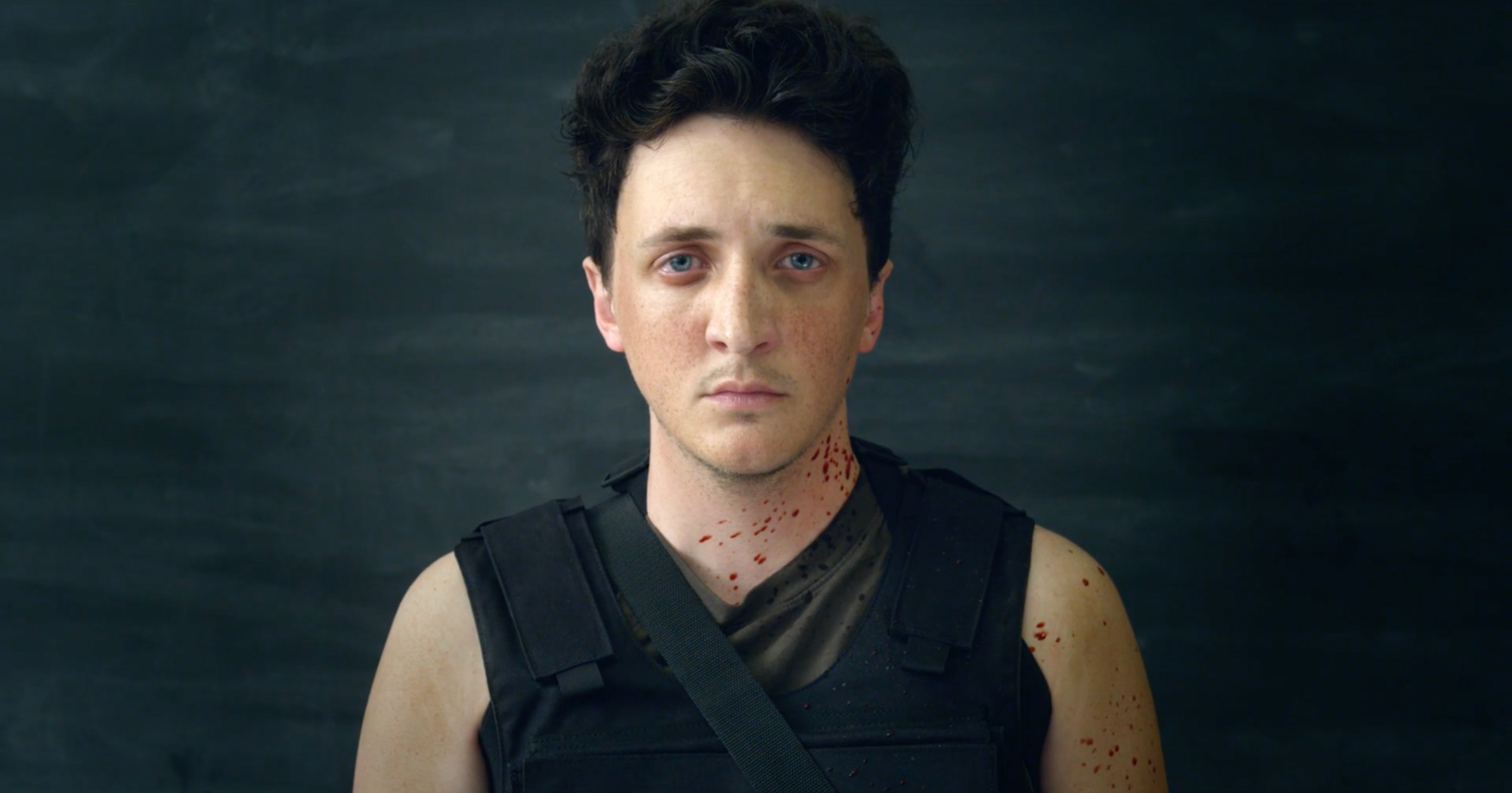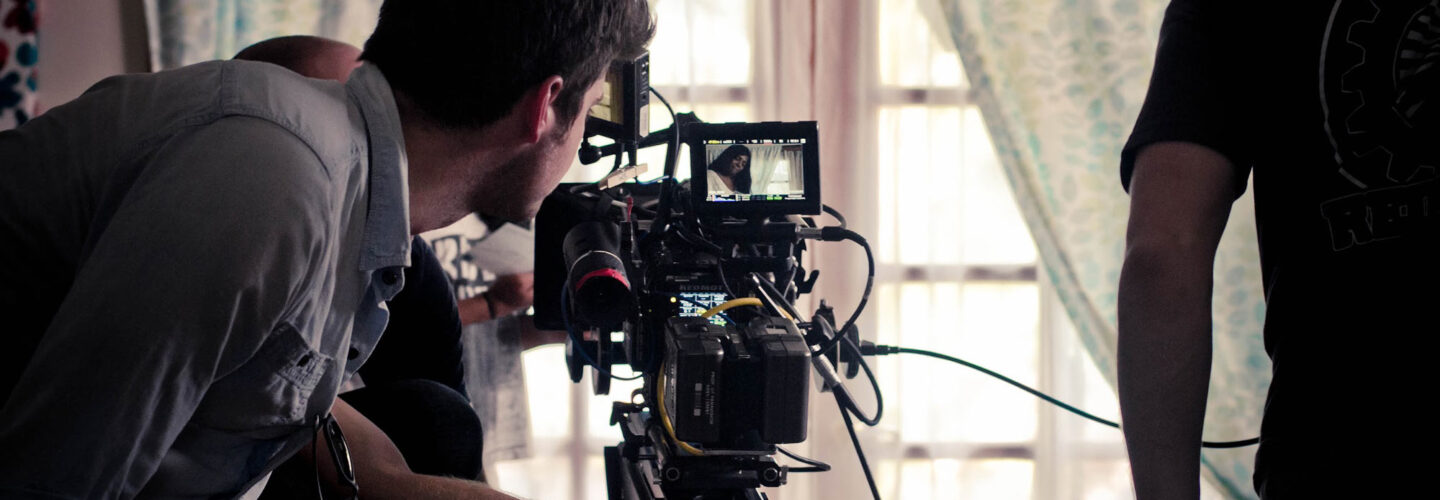
It’s a depressing fact of our modern times that news of the needless loss of life in yet another mass shooting incident is all too prevalent. And with each tragedy, initial feelings of shock and collective grief are soon subsumed by statics of victim numbers, guns and bullets used. Spurred by his own lessening reaction to these tragic events, Director Ryan Moody conceived short film Obituaries in an effort to reframe the focus onto the lives of those who died and the people they leave behind. We speak to Ryan about creating portraits of the lives lived by the victims behind the headlines.
(A heads up, there are some NSFW images in here.)
When tragic events like this take place much of the focus is directed towards the life of the perpetrator as opposed to the victims. How much of a reaction to this and media sensationalism in general was Obituaries?
I think so much of the coverage of these events isn’t necessarily sensationalism as much as an attempt to quantify these events. We measure the size of the tragedy by how many were killed, or how many guns were used, or what guns were used, or if there was a warning. The truth is that when we quantify these events, we often lose sight of the human tragedy. Every life is unique. Every life is sacred. Every life lost is a tragedy in and of itself. I wanted to take a qualitative approach, rather than quantitative. I wanted to explore the grief and discover the real human loss during these events that so often turn into statistical data for political debate.
You fill out the characters’ lives by presenting their ‘secret obituaries’ – were there specific types of people you set out to portray? How do you feel they compliment each other in the wider narrative?
If anything, the characters are all are based on me in one way or another. My goal was to make them as real as possible. I didn’t want to turn them into these angels that led perfect lives. I wanted to show the good, the bad, and the ugly about people. Each one of them had problems. Each one of them made mistakes. Each one of them had the capacity to hurt or to help someone. I think they compliment each other because of their diversity. I mean that not just in their heritage, but also in their experiences. They vary in ages. They vary socioeconomically. They also vary in who they leave behind. I wanted to show the different sides of grief. What does it feel like for a parent to die, opposed to a spouse, opposed to a child, opposed to a friend, opposed to a stranger?
The film doesn’t have any answers. Rather, it’s an expression of how I feel.
James Franco’s apathetic narrator is unfortunately all too relatable. Was that role created to engender a particular outlook or considerations in the audience?
James’ narrator is really the inspiration for the entire film. It’s how I felt after I had heard of yet another tragedy in what seemed like a stream of tragedies that defined my life. I felt apathetic, and I hated it. I felt like the problem. I wanted to do something, but I didn’t know what, so I wrote this movie. The film doesn’t have any answers. Rather, it’s an expression of how I feel.

Obituaries isn’t the only time you’ve collaborated with Franco. How did your creative partnership begin?
James was a teacher of mine at UCLA. We collaborated on a short film in his class called A Walk in Winter, which was a real education in collaboration. After the class, I asked him to be in Obituaries. He read the script, and said yes. He’s been a great supporter of the film ever since.
What was your approach when defining the film’s visual style? I believe you paid particular attention the emotional effect of the shooting frame rate.
The visual style is a reflection of the form of an obituary. Ragland Williamson (DP) and I wanted to show a visual obituary for each character, so we started breaking down how to do that. The first thing we realized was that an obituary is like a portrait of a person’s life, so we looked at portraiture. That’s really where the concepts for the composition started. Then we looked at the intention of a portrait, which is to take a closer look at someone, so that’s where the idea for the slo-mo came in. It’s not as slow as you’d typically see in cinema. It’s half speed, which allows you to take a closer look without it feeling frozen in time. After we locked into that style, Brianna Quick (CD) and Yuki Izumihara (PD) and I got together to discuss the differences and similarities between each obituary. We wanted each to be unique, but also to be unified. They did an amazing job of assigning sort of a subtle color code to each one that really shined through when we see each character’s direct address close-up in the end. Ragland, Brianna, and Yuki all collaborated in a way that elevated each others’ work, and I’m really proud at what we all created.

The story required you to employ several effects shots. How did these impact your approach to production?
The effects, just like anything else, took a lot of preparation. We did practice shoots and tests leading up to filming. All said and done, there was only six days of principal photography, but it was probably five times that in pre-pro meetings, test shoots, and rehearsals. We were really fortunate to have the amazing Gary D’Amico teach us how to do the suicide shot. We also had a great special effects makeup artist, Mario Cisneros, who made the wounds and blood look just right. In addition to that, Adam Petke and Stephen Marsiano put in a lot of work to make the visual effects look invisible. Basically, I had the best crew I could have asked for, and they all brought a ton of creativity to the film.
Adam Bokesch’s score seamlessly shifts tones as we move between the various lives. What direction did you provide as to the music of each character?
Adam and I have worked together on a few projects now, and he gets better and better every time. I sent him a lot of ideas as to what I was thinking for each piece, sometimes as temp music over picture, sometimes just as a playlist. We also discussed instrumentation a lot, and what instrument best portrays a given mood. We talk for a while when the film is still being edited, but once it’s picture locked, he goes and does his thing. There will be small tweaks back and forth after that, but usually the score is 90% perfect when he sends me the first cut.
Although very much a standalone film, Obituaries is actually part of a larger feature you’re planning. How do you see the story expanding beyond the borders of the short?
The feature follows all those characters we leave behind. If you think of this short as the beginning of the feature, the rest of the movie is following the Professor’s son, Sid’s fiancé, Albert’s mother, and Franco’s character as they grieve within this community. It’s an exploration of grief after these types of events take place. As a society, we experience these events together, and we stay with them for a few days, but we don’t really pay attention much after that. The feature is really about these communities, and what these events do to them in the long term.
Are there any other new projects on the horizon?
There’s always projects I’m working on, but my ultimate goal is to make Obituaries as a feature. Right now, we are looking for the right company to take it on. It’s tough subject matter, but it’s a story that needs to told, and it needs told now.


